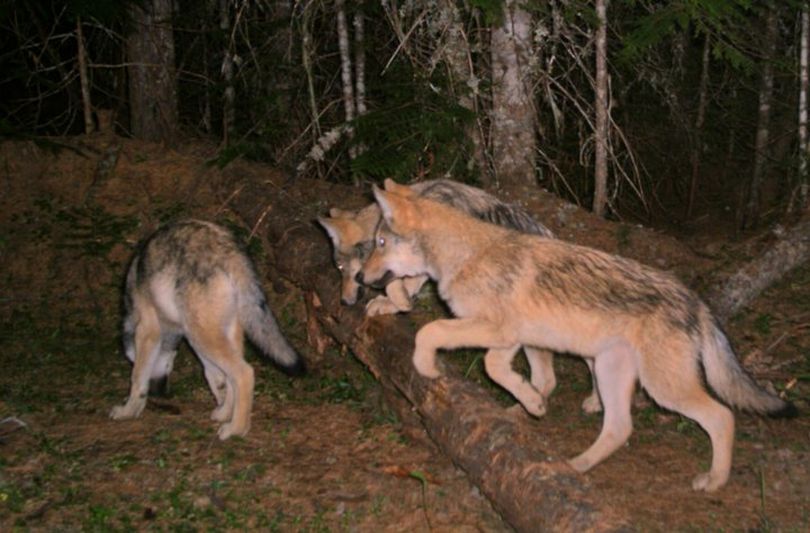Wolf-killed livestock confirmed in Stevens County

ENDANGERED SPECIES -- A wolf killed a 9-month-old Holstein heifer last week on private property in Stevens County, the Washington Fish and Wildlife confirmed Tuesday.
"The wolf pack associated with the depredation has not been determined," said Donny Martorello, the agency's wolf program leader, indicating the investigation is ongoing.
Martorello also released the revised protocol for lethal removal of wolves to stop wolf depredations on livestock. The protocol (see attached) was hashed out by the Wolf Advisory Group over many months of discussion. The consensus was a milestone, participants said.
Martorello explains:
The department’s past protocol for lethal removal of wolves was not well-understood or -supported by the public, and even generated differences of opinion within WDFW. Lacking support for such an important aspect of wolf management and recognizing the long-term polarization of public values on wolves, the Department sought external expertise in addressing social conflict.
Last May, the Department doubled the membership of the Wolf Advisory Group and began a process to bring the WAG stakeholders and Department staff together to re-engage on key issues and to reach a sufficient consensus on recommendations to the Department on wolf management policies.
One year ago, the expanded WAG had its first meeting with Francine Madden, a consultant with Human Wildlife Conflict Collaboration, who was retained to help reduce the conflict that had surrounded wolf management in Washington state. Since then, the WAG members and a diversity of Department staff, from field biologists to managers, met six times, and along the way reconciled relationships, learned about each other’s values and needs, and worked hard toward positive outcomes.
The attached protocol reflects a wide range of values and extensive participation from livestock producers, environmental groups, and hunting advocates. It also reflects the Department of Fish and Wildlife’s commitment to do everything we can to understand and respond to public values and community concerns regarding wolf recovery.
This protocol wasn’t created in two days. It required a year-long process that emphasized positive stakeholder relationships, a respectful approach to resolving differences, and a willingness to tackle serious, challenging issues. Through that process, the WAG members and Department staff unanimously agreed to the attached protocol. The Department has accepted this approach and will operate under the protocol for the remainder of this year’s grazing season.
In other wolf news:
- The Colville Tribe has authorized wolf trapping in addition to wolf hunting for tribal members on reservation lands.
- WDFW staff in mid-May captured and placed GPS collars on three wolves in the Loup Loup Pack that ranges between Twisp and Omak. The wolves are a male, a yearling female and a breeding female.